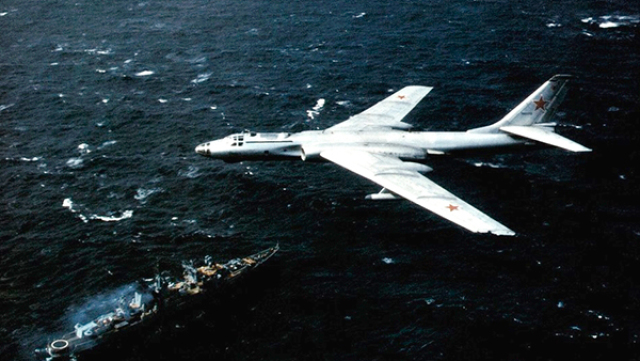The fate of Naval Aviation of the Navy is being publicly discussed at the highest level for the first time. Why is the service of naval pilots extremely important for the defense capability of Russia, what is the state of Naval aviation today – and what needs to be done to revive it?
During the meetings on the military-industrial complex and military construction in Sochi, President Putin made a statement that in the conditions of the increase in the number of fleets of Russia by other countries, it is necessary to develop naval aviation (MA). I can't immediately remember when the head of the Russian state just mentioned naval aviation. It can be assumed that the reports on the state of affairs in the AI have reached the very top. But first of all, it is worth telling what Naval aviation was in the Soviet years – and what it has turned into today.
Rise and fall
During the Great Patriotic War, Naval Aviation destroyed more ships and ships of the Germans and their allies than any other kind of fleet forces. This was largely due to the fact that its pilots had a "naval" view of things and a special education of a naval pilot. The Red Army Air Force, which flew on, in fact, the same aircraft and had a large number, performed much worse in working on naval targets. It is precisely because of the focus of combat training and training of personnel.
After the war, large-scale growth awaited Naval aviation. The main opponents - the United States and Great Britain - were overseas, had powerful fleets. The USSR could not afford naval construction at the level of the Anglo-Americans. Therefore, aviation has become a palliative. Since it is necessary to attack enemy ships, and there are no ships of their own, then let there be an opportunity to organize a massive air strike from the shore.
So, since 1955, the formation of aviation units began, which were armed with heavy aircraft with anti-ship cruise missiles KS-1. At first they were piston-engined Tu-4, illegal copies of American B-29s, but soon they began to be replaced entirely by domestic Tu-16s. So there was a naval missile-carrying aircraft, MRA. For many years it was a real "sledgehammer" in the hands of the Navy, which could be "chartered" by anyone. Hundreds of missile carriers could carry a huge number of cruise missiles and launch them at a target from a distance of hundreds of kilometers. Americans were afraid of this kind of naval forces even after the collapse of the USSR – and there were reasons for that.
Anti-submarine aircraft appeared. Naval aviation consistently received Be-6, Be-12, Il-38, Tu-142, Tu-142M. With the advent of the first ships capable of carrying helicopters (anti–submarine cruisers of project 1123 - "Moscow" and "Leningrad"), anti-submarine and later search and rescue ship helicopters appeared. The first family of mass-produced helicopters of this type was the Ka-25. Anti-submarine helicopter air units have appeared, equipped with a Mi-14 attack helicopter capable of landing on water if necessary.
A special domestic way of developing naval aviation was the appearance of the marine reconnaissance and target designation system "Success", an integral part of which were the Tu-95RTS target designator reconnaissance aircraft and Ka-25TS target designator helicopters with a powerful radar station. These devices could quickly survey vast sea spaces and transmit to aircraft and missile-carrying ships all the data necessary for long-range shooting. Tu-95RTs remained a big problem for the Americans until the very last day of their stay in the ranks.
The appearance of the first aircraft carriers gave a start to the life of naval aviation - Yak-38 attack aircraft, which were replaced by supersonic "vertical" Yak-41 (then 141), and then normal horizontal take-off and landing aircraft, for the beginning of the aircraft carrier program of the Soviet fleet. Variants of the aircraft created then and now are in service with naval aviation, albeit deeply redesigned - MiG-29K and Su-33.
Already in the 1980s, Naval aviation began to degrade at the same rate as the USSR. After the collapse of the country, there was no money in the fleet, the flight of pilots and the number of aircraft were rapidly declining. The naval assault aviation regiments have gone into oblivion – the aircraft-carrying cruisers that were based on them have disappeared.
The sudden "disaster from where they did not expect" was the specifics of the education of pilots and sailors inherited from the USSR, and the difference in military ranks – the pilots have combined arms, the sailors have sea. A trifle, but... In the USA or the UK, a naval pilot is also a sailor, just "flying", with a naval rank, naval education, traditions, ethics. The same ship's officer, only managing the ship's aircraft. In the USA, for example, it is pilots who command aircraft carriers. Former patrol aviation pilot Bill Moran almost became the Chief of Naval Operations (the highest position in the US Navy). There are career "paths" prescribed in the documents that allow a naval pilot to go to staff work in naval formations, in naval personnel, and then go up the naval career ladder. Pilots do not have an upper "bar" for a career, they are also a fleet. This creates a sense of unity between the flight personnel and the crew and an awareness of their belonging to a common cause.
It's different in Russia. After the liquidation of naval aviation schools, pilots are taught for it in the same place as for the Air Force. They have combined arms ranks, other traditions, slang, humor than sailors. This is a separate caste. And with limited career prospects. And this generates mutual alienation between sailors and pilots, and most importantly - the misunderstanding of the importance of aviation in principle, often demonstrated by the commanders of the naval personnel. When in the 90s and early 2000s there was a question of what to "kill" in the first place due to lack of money, it was aviation that went "under the knife" ahead of everyone - from fuel for flights to the aircraft parts themselves.
The defeat was completed by the reform of Serdyukov and the chief of the General Staff Makarov. The transformation of the commands of the types of Armed Forces into, in fact, procurement and administrative bodies led to the elimination of those kinds of forces in them that needed centralized management.
So the MRA was eliminated. Anti-submarine aviation has almost completely lost its combat capability. Mine-fighting helicopters and trawl tugs have completely disappeared. Anti-submarine helicopters are not mass-produced, all Ka-27 and 27M are old-built machines. The training of naval fighter aviation regiments is eloquently indicated by their results in Syria, when working with Kuznetsov. However, we have an aircraft carrier under repair, which will end no one knows when, we can not think about them yet. Separately, it should be said about the pilots' raid – it was several times lower than in the VKS until quite recently.
Today, Naval aviation is just a pile of aircraft parts for various purposes. In Kamchatka, she has MiG-31 interceptors, on the Black Sea – Su-30SM and Su-24M in assault air units, "sharpened" for strikes on ships. There is no single idea, no concept of combat use in this structure. But finally, the Naval Aviation has a new chief, and the president drew attention to what was happening. What measures should be taken to restore the power of naval aviation?
Reborn from the ashes
Of course, everything does not come down to technology, but it is the technical equipment of Naval aviation that is the main problem today.
The most critical thing is that an anti-submarine aircraft is needed, with a modern search and sighting system (PPS). Given the threat posed by American submarines, this is the number one question. And the main thing here is not a carrier, we have a carrier in the form of a Tu-214. The main thing is that there will be PPS inside, as well as weapons.
The next question is the ship's helicopter. It would be a mistake to wait for a new Lamprey car. We urgently need to put a normal PPS in the Ka-27 and resume its production. Western combat experience says that we need not just an anti-submarine helicopter, but a marine helicopter capable of fighting submarines, striking surface targets with anti-ship missiles and issuing target designation to missile complexes of ships, including (this is very important) anti-aircraft. Air–to-air missiles won't really hurt him either.
We need a full-fledged basic strike aircraft. Today in Russia it is the Su-30SM, but this machine, firstly, has an outdated radar station (radar), and secondly, carries only X-31 and X-35 missiles. The missiles are good, but they can "seal" a large ship only with multiple hits, and for the use of the X-31 you will have to climb on an airplane under the fire of shipboard missile systems. We need an aircraft with a radar similar to the one on the Su-35 - N035 "Irbis", and the ability to carry a heavy missile - the X-61 "Onyx" or a hypothetical aviation version of the "Zircon".
We need to solve something with aerial reconnaissance and targeting. The Russian Navy has no specialized high-speed scouts capable of operating where the enemy has fighter aircraft. Specialized containers with reconnaissance equipment that turn an attack aircraft into a scout are exotic and rare, and they are very far from perfection.
Organizational measures are no less important. The two most important fleets of Russia – the Northern and Pacific - do not have strike aircraft. Naval strike aviation is critically important for our country. Our "home" theaters of military operations are far from each other and disconnected, and the only maneuverable force that can be quickly strengthened by any of the fleets is aviation.
We need a normally functioning search and rescue service to rescue the pilots who ejected and went to an emergency landing, today there are serious problems with this. It is critically important to raise the combat capability of naval fighter aviation regiments – there will be no help where they have to fight, there will only be their own aircraft carrier, and you need to fight better than the enemy.
It is worth rethinking the doctrine of combat use and the equipment and weapons necessary for it. We need a series of exercises that would make it clear how to act today and how to build the interaction of aviation with surface forces. And, of course, we need to solve the problem with the split between pilots and sailors, starting with the assignment of naval ranks to fleet aviators and prescribing their possible paths to admiral positions, including internships in the naval staff. And then solve the problem with education, which should also have a naval "bias". All this will take time, and we can no longer delay. The situation in the world is heating up more and more.
Alexander Timokhin









